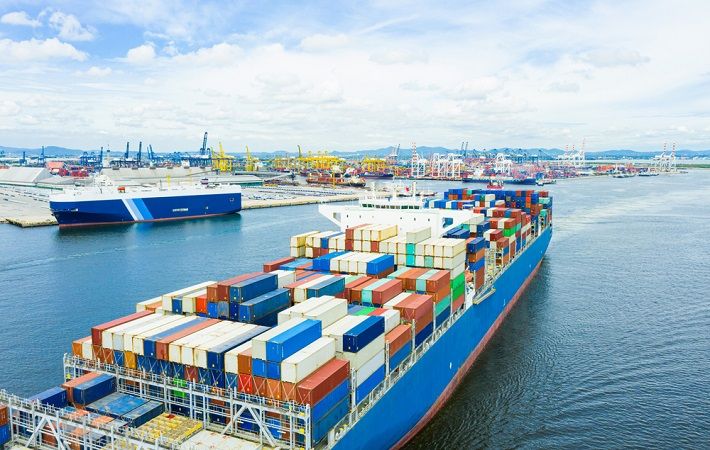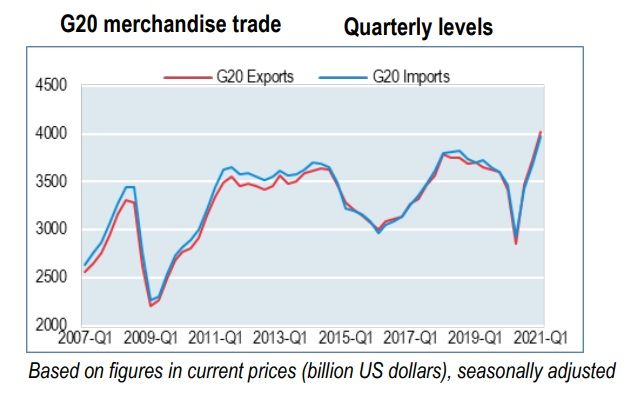
With the exception of the United Kingdom, all G20 economies recorded positive growth in Q1 2021, with the depreciation of the US dollar and the related increases in commodity prices playing a role in the recovery from the COVID-19 lows.
China, the G20’s largest merchandise trader, saw exports (up 18.9%) and imports (up 19.0%) soar in the first quarter of 2021. Chinese import growth was led by metals and metal ores, cereals and integrated circuits, while export growth was led by electronic products including integrated circuits, vehicles, and textiles (including face masks).

Source: OECD Statistics and Data Directorate
In the European Union exports and imports grew by 3.8% and 5.0%, respectively. However, UK recorded negative merchandise trade growth, both for exports (minus 5.7%) and for imports (minus 10.5%) in Q1 2021. The slowdown follows large increases in the previous quarter, when stockpiling was taking place in view of the exit from the EU Single Market.
Argentina (exports up 33.3%), Australia (exports up 17.5%), Brazil (exports up 14.7%), and South Africa (exports up 17.3%), among the G20’s largest exporters of agricultural commodities and metals, have benefitted from the rising commodity prices.
Additionally, the nearly 35% increase in crude oil prices in Q1 2021 translated into the rising export values of Canada (up 10.8%), Russia (up 13.1%), and Indonesia (up 12.4%). Since energy products are a major import for most G20 economies, the price increases also resulted in higher import values in the same period.
While higher trade in semiconductors partly contributed to total merchandise trade growth in the United States (exports and imports up by 5.7% and 5.3%, respectively), chip shortages affected, in particular, the automotive supply chains. A slowdown in shipments of vehicles and parts weighed on total merchandise exports from France (up 2.7%) and Mexico (up 0.4%), both markedly below the G20 average.
Fibre2Fashion News Desk (RKS)